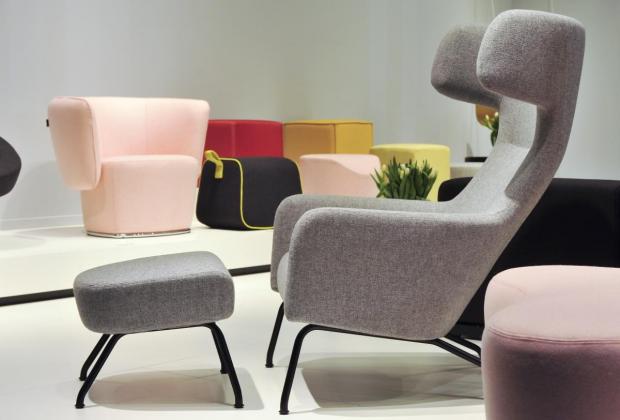
Walking around Orgatec, a trade show based in Cologne dedicated to trends in the workplace, often felt more like a trip around an out of town furniture superstore. There were armchairs in comforting colours like lilac and turquoise, stools covered in groovy striped fabric and even the desk screens, so emblematic of the corporate world’s obsession with separating off each worker bee and getting them to work harder, faster and be more productive, were displayed in primary colours.
What was going on? Why did the prototypes of what we could expect to be sitting on, filing papers in and working at have more in common colour and texture-wise with what we might be living with at home?
Pre-recession the work environment was all about sleep pods, gyms and hairdressers in offices so high powered execs never, ever had to go home. Post-2008 having an office that took its design cues from the home trend was at first borne out of economic necessity. Nowadays, staff have got so used to this semi-domesticity at work that its continuing prevalence is down to user-demand more than anything else.
When I co-authored my book on the landscape of the workplace, Total Office Design, in 2011, there had been a marked sea change in how designers had approached office environments.
Budgets had been slashed and it simply wasn’t feasible to specify sofas that cost more than a middle manager’s monthly salary. So architects got innovative and looked for cost effective solutions.
At IT company Bearstech, architect Paul Coudamy scoured the skips around Paris to repurpose bourgeois floorboards, abandoned palettes, shipping crates, old furniture samples and planks with marks and scratches all over them into a ‘bear cave’ of an office. A wooden concave ceiling made of over 2500 pieces of this waste material has created an innovative, intimate atmosphere for the workforce and is the very antithesis of a blue chip technology firm.
From a home fit for a large grizzly to offices workers literally living in a box. At the Nothing office in Amsterdam, designers Alrik Koudenburg and Joost van Bleiswijk used hard wearing cardboard, similar the kind that is probably found tucked away in every cupboard under the stairs from old computers and stereos, to create a striking temporary office environment. The demountable modular system was only intended for Nothing, a creative agency, to use for two years. The idea for this came from a scene from the Michel Gondry film The Science of Sleep where a dream sequence is set in a cardboard construction. Koudenburg found a low-priced supplier in Italy prepared to sell an awful lot of industrial cardboard for just over three thousand euros and the rest is workplace design history. Apart from a wooden beams on the stairs, everything from meeting rooms to desks is made of cardboard and its creators promise it is coffee spill proof too.